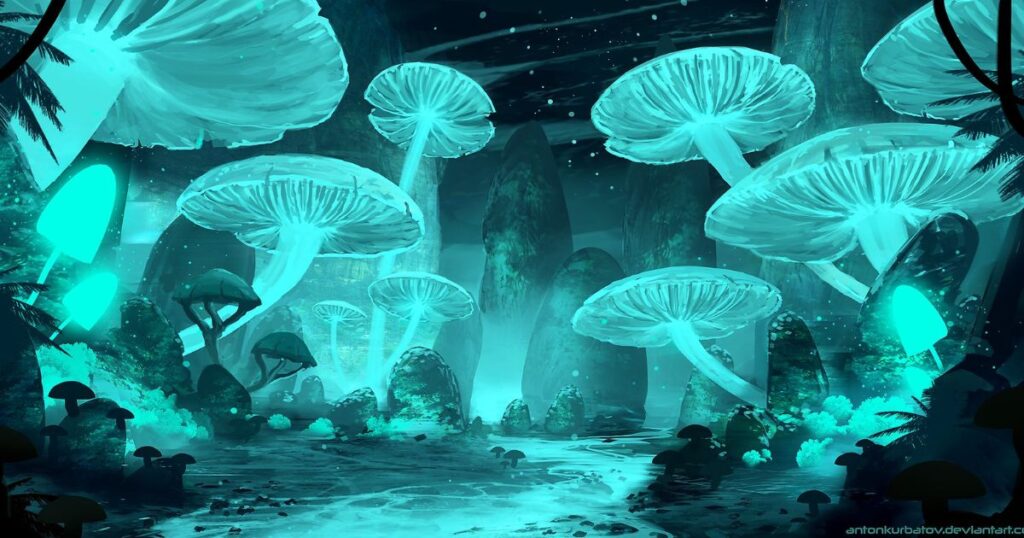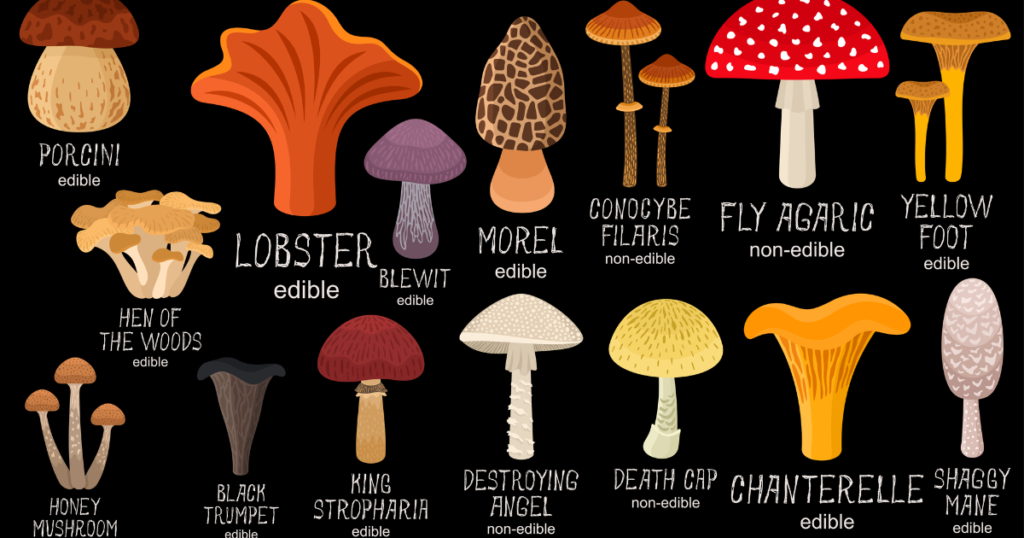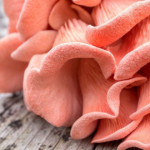Mushroom Codes delves into the cryptic symbols and patterns found on mushrooms in the Pacific Northwest. These codes, crafted by indigenous tribes, served as a means of preserving and sharing ancient wisdom and cultural heritage. The study explores their historical significance and the deep connection between these codes and the natural world.
Mushroom codes is more than just a cryptic enigma; it’s a portal to a forgotten world. Hidden in plain sight, this ancient system of symbols has baffled scholars and intrigued cryptographers for centuries. Legends whisper of its power to unlock secrets of the universe, merging the mystical with the mathematical. Imagine a code so old, it predates written language, yet so advanced, it challenges modern technology. Each symbol, derived from the humble mushroom, holds a piece of a grand puzzle waiting to be solved. Are you ready to uncover the mysteries of the Mushroom Code?
Mushroom Code is a fascinating cryptographic system shrouded in mystery and myth. Believed to originate from ancient civilizations, it employs intricate symbols inspired by the shapes and structures of various mushrooms. These symbols are thought to contain esoteric knowledge, encoded messages, and even cosmic secrets. Historians and cryptographers alike have found traces of Mushroom Code in diverse artifacts, from temple carvings to ancient manuscripts. Its complexity suggests an advanced understanding of both natural forms and abstract thinking.
The Whispers of the Forest

Deep within the ancient forests of the Pacific Northwest, an enchanting phenomenon has intertwined itself with nature’s secrets for centuries. This is the Mushroom Code—a cryptic language of symbols and patterns etched onto the caps of mushrooms, each one a mysterious cipher waiting to be deciphered. These codes are steeped in folklore and are sacred to the indigenous tribes who have lived in these woodlands for generations.
For these First Peoples, the Mushroom Codes have been an integral part of their culture, preserving and sharing knowledge, stories, and sacred truths through the ages. Elders speak in hushed tones of a time when the forest itself seemed alive with these cryptic messages, with each mushroom acting as a living codex containing ancient wisdom that could only be unraveled by the initiated.
The Legend of Tskalaksh
The earliest known whispers of the Mushroom Codes come from the Salish peoples, whose ancestral lands span what is now western Washington and British Columbia. Their rich oral traditions weave the origins of these enigmatic glyphs into the fabric of legend.
One such legend tells of a young Salish hunter named Tskalaksh, who, lost in the dense forest, found himself guided by an ancient cedar tree. The tree revealed that the mushrooms scattered across the forest floor were not mere fungi, but living libraries, their caps inscribed with a sacred code containing the secrets of the natural world.
Fascinated by this revelation, Tskalaksh dedicated himself to studying the intricate patterns on the mushrooms, slowly deciphering their cryptic symbols. His understanding grew, as did his respect for the natural world and its complex systems of communication.
Over time, Tskalaksh’s knowledge of the Mushroom Codes brought him great respect within his tribe. He shared his insights with a select few, initiating them into the art of reading and interpreting the codes. These chosen individuals became guardians of this ancient wisdom, entrusted with preserving and passing it on to future generations.
The Language of Nature

The Mushroom Codes were a complex and evolving system of symbols and patterns, each one a delicate cipher representing a specific concept, idea, or narrative. Some codes depicted the intricate cycles of nature, mirroring the seasons, animal migrations, and celestial rhythms. Others recounted epic journeys and adventures, preserving the oral histories and traditions of the tribes within their cryptic whorls.
Still others contained sacred knowledge about medicinal plants and their healing properties, with the patterns on mushroom caps serving as a living pharmacopoeia—a testament to the deep understanding and reverence these First Peoples held for the natural world.
One of the most fascinating aspects of the Mushroom Codes was their ability to evolve over time, just like the living organisms on which they were etched. As new knowledge and experiences were gained, the codes would shift and change, incorporating new symbols and patterns to reflect the ever-changing tapestry of the natural world. This ensured that the Mushroom Codes remained a vibrant and dynamic reflection of the cultures they served.
For centuries, the Mushroom Codes remained a closely guarded secret, known only to the initiated few within the indigenous tribes of the Pacific Northwest. Their existence was a sacred trust, symbolizing the profound bond between these First Peoples and the land that had nurtured and sustained them for millennia.
The Outsiders’ Curiosity
In the late 18th century, the outside world first became aware of these mysterious symbols. In 1792, a group of European explorers ventured deep into the Pacific Northwest, drawn by tales of the region’s natural wonders.
Amongst them was William Beresford, a naturalist who noticed a weird sight at some stage in an day trip: a mushroom bearing intricate styles in contrast to some thing he had ever visible. Intrigued, Beresford meticulously documented those mysterious codes, making targeted drawings and notes in his journal.
In spite of his efforts, the proper which means and origins of those cryptic glyphs eluded him, their secrets remaining tightly held with the aid of the indigenous cultures that were their custodians for generations.phrase of Beresford’s discovery spread, igniting a fervor among academics and students eager to get to the bottom of the Mushroom Codes.
Expeditions were launched, samples had been collected, and limitless theories emerged, ranging from historic civilizations to extraterrestrial communication.in spite of the surge of interest, the proper origins of the Mushroom Codes remained a mystery, guarded via the indigenous tribes who had preserved them for untold generations.
Read More:
Creative Recipes And Serving Ideas For Sauteing Mushrooms
The Unveiling
A breakthrough finally came in the late 20th century, thanks to the dedication of linguist Emily Jacobson. Fascinated by the Mushroom Codes from a young age, Jacobson devoted her life to uncovering their secrets.Through years of fieldwork and research, Jacobson earned the trust of several tribal elders who agreed to share their sacred knowledge with her. What she discovered changed our understanding of this ancient communication system forever.
The Mushroom Codes, she learned, were a sophisticated written language deeply intertwined with the natural world and the cycles of life. Each code was a carefully crafted message, a story, or a piece of wisdom passed down through generations, preserved on mushroom caps.
Jacobson’s work not only revealed the origins of the Mushroom Codes but also highlighted their profound significance to the indigenous cultures of the Pacific Northwest. These codes were more than a curiosity; they embodied the deep, sacred connection between these First Peoples and the natural world, a testament to their reverence for life’s cycles and their commitment to preserving and sharing their knowledge.
Jacobson’s Research

Jacobson’s studies sparked renewed hobby inside the Mushroom Codes, drawing linguists, anthropologists, and naturalists to the Pacific Northwest. Her work stimulated a new generation of scholars, every dedicated to unraveling the problematic know-how woven into these historical glyphs.
Nowadays, the Mushroom Codes are identified as a essential part of the cultural heritage of the area’s indigenous tribes. Efforts are underway to maintain and revitalize this historical lifestyle, with elders teaching younger generations the art of analyzing and deciphering the codes.
As our world continues to evolve, the Mushroom Codes stand as a testomony to the enduring expertise and ingenuity of the natural international and the cultures intertwined with it. They remind us that profound truths and mysteries watch for discovery, hidden below the forest canopy, for those curious and humble enough to are seeking them out and listen to the whispers of the ancients.
A Living Legacy

Deep in the emerald include of the Pacific Northwest’s historic forests, the legacy of the Mushroom Codes continues to thrive, a dwelling tapestry woven into the very cloth of the land and its human beings. As the sector round us hurtles forward, propelled with the aid of the inexorable march of technology and modernity, those enigmatic glyphs stand as a poignant reminder of the profound information and information that can be gleaned from the natural international.
In remote corners of the wooded area, wherein the echoes of historical traditions still reverberate, elders collect the young ones round them, their weathered faces etched with the tales and expertise passed down thru generations. it’s far right here, in these sacred spaces, that the art of studying and deciphering the Mushroom Codes is saved alive, a testament to the resilience of those First Peoples and their unwavering commitment to maintaining their cultural background.
Each mushroom cap, adorned with its complicated patterns and emblems, becomes a portal into a international of historical understanding, a dwelling codex that holds the secrets of the herbal cycles, the stories of awesome journeys and adventures, and the knowledge of medicinal vegetation and their healing residences. The young ones concentrate with rapt interest, their eyes wide with surprise, as the elders lightly manual them via the difficult language of the codes, unveiling layer upon layer of meaning and knowledge.
Ever Changing Tapesty
But the Mushroom Codes are greater than just a relic of the past; they are a living, breathing tradition that continues to adapt and adapt to the changing global around it. As new knowledge and reports are received, the codes themselves shift and rework, incorporating new symbols and patterns to reflect the ever-converting tapestry of the herbal world.
In this manner, the Mushroom Codes become a bridge among the past and the present, a dwelling testament to the iconic wisdom and resilience of the indigenous cultures that have known as the Pacific Northwest domestic for millennia. They remind us that, even in our speedy-paced, technologically pushed global, there may be still plenty to be learned from the gentle whispers of the wooded area and the historical languages which have been woven into its very fabric.
As we look to the future, it’s miles vital that we embody and honor the legacy of the Mushroom Codes, for they preserve the important thing to unlocking a deeper expertise of our courting with the natural international and our location inside it. by means of preserving and revitalizing this ancient lifestyle, we now not handiest pay homage to the rich cultural history of the first Peoples, however we also make certain that the awareness and knowledge encoded within these enigmatic glyphs will preserve to manual and encourage generations to come.
FAQs
What are the Mushroom Codes?
The Mushroom Codes are an ancient system of symbols etched onto mushroom caps, believed to hold knowledge and secrets from indigenous cultures of the Pacific Northwest. These codes are both a form of communication and a repository of wisdom.
Who discovered the Mushroom Codes?
The Mushroom Codes were first documented by European naturalist William Beresford in the late 18th century. However, they had been known and used by the indigenous tribes for centuries before that.
What is the significance of the Mushroom Codes to indigenous tribes?
For indigenous tribes, the Mushroom Codes are a sacred part of their cultural heritage, preserving stories, knowledge, and sacred truths. They reflect a deep connection to the natural world and its cycles.
How did Emily Jacobson contribute to our understanding of the Mushroom Codes?
Emily Jacobson, a linguist, dedicated her life to studying the Mushroom Codes, earning the trust of tribal elders and uncovering their true nature as a sophisticated written language. Her work brought global attention to these ancient symbols.
Are the Mushroom Codes still used today?
Yes, the Mushroom Codes are still taught and preserved by indigenous elders, ensuring this ancient knowledge is passed down to future generations. Efforts are underway to revitalize and maintain this unique cultural heritage.
Conclusion
The origins of the Mushroom Codes are a captivating journey into the coronary heart of the Pacific Northwest’s ancient forests and indigenous cultures. these cryptic symbols, etched onto mushroom caps, function a testomony to the profound awareness and difficult verbal exchange structures of the first Peoples. From their initial documentation by way of William Beresford to the groundbreaking studies through Emily Jacobson, the Mushroom Codes have intrigued and stimulated pupils international.
Nowadays, they’re diagnosed as a important part of the cultural historical past of the vicinity’s indigenous tribes, with ongoing efforts to keep and train this ancient lifestyle. The Mushroom Codes remind us of the deep connections between humanity and nature, and the enduring mysteries that also lie hidden beneath the woodland cover, ready to be observed and understood.








1 thought on “Origins of the Mushroom Codes”